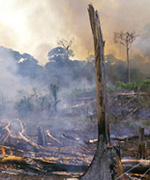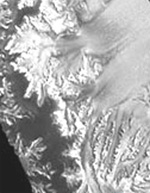 |
 |
 |
 |
 |
 |
 |
 |
 |
 |
|
|
|

UN delivers definitive warning on dangers of climate change |
Michael McCarthy, Environment Editor, Paris
|
The "six-degree world" might come about by 2100, if human society carries on with rapid economic growth and high levels of burning fossil fuels coal, oil and gas which emit the carbon dioxide causing the atmosphere to warm. |
Their current worst case is worse than that suggested in the previous 2001 IPCC report, when the highest rise envisaged by the end of the century was 5.8°C. Yesterday was the first time the figure of six degrees has been mentioned in UN predictions. The scientists added that, as it was a global average, it would mean higher rises in high latitudes, with consequently severer droughts, increased storms and melting of ice and glaciers. It was the most extreme of a range of predictions by the group of 600 researchers from 40 countries, whose consensus report, using 14 supercomputer models of the global atmosphere, has been peer-reviewed by 600 more meteorologists. Perhaps the most significant new fact in their report was the prediction for the first time that if CO² were allowed to double from before the Industrial Revolution, to about 550 parts per million, the Earth's temperature would probably rise by 3°C. This, though lower than the worst case, would still, in effect, be unsupportable by society. The significance of this is that some scientists, including the Government's chief scientific adviser, Sir David King, have been seeing the 550ppm figure as a realistic level at which (or below which) the world might aim to stabilise CO² levels. This will hardly seem realistic now. The report examines six scenarios of human activity and predicts temperature rises to go with each. The "best guesses" range from a rise of 1.8°C at the low end to 4°C at the top. Even the smallest would be greatly destabilising. The study, the IPCC's 4th Assessment Report or AR4, has a lower worst-case scenario for sea-level rise than its predecessor, 59cm by 2100 rather than 88cm. But qualifications made about the models used for sea-level simulation make it clear this new figure could rise considerably, ending up worse than the earlier one. Besides the temperature rises it predicts, yesterday's report, released in Paris in a media scrum of more than 50 television crews, is noteworthy for the higher level of confidence with which it sets out its case. It will be seen as bringing to an end a 20-year argument about whether or not global warming is happening and whether or not human activities are its cause. These doubts have been used as an excuse for inaction, in particular by George Bush's administration. It is "unequivocally" happening, the report says, and there is "at least a nine out of ten chance" that human action principally the emission of CO² from burning fossil fuels is behind it. As the study has been officially endorsed by the home countries of all the scientists who took part including the US President Bush has nowhere left to go in his attempts to use uncertainty to prevent decisive action. Indeed, the report markedly ups the ante, and will increase pressure on leaders, from Mr Bush down, to combat it together by creating a regime to succeed the Kyoto Protocol, which runs out in 2012. Talks on a Kyoto successor are stalled. The essential point now will be to bring in the Americans, today's biggest CO2 emitters, and the developing nations, led by China which will soon overtake the US as the biggest carbon polluter. This year's German presidency of the G8 group of rich nations will probably become the forum for any new initiative. Britain's Environment Secretary, David Miliband, said: "The report confirms our concerns that the window of opportunity to avoid dangerous climate change is closing more quickly than previously thought. It is another nail in the coffin of the climate-change deniers ... [and shows] that the debate over the science of climate change is well and truly over. What's now needed is the international political commitment to take action." Achim Steiner, head of the UN Environment Programme,said this "marks the end-point of the debate ... The focus now shifts to policy ... We have to show leadership. If we don't, the world will be in even deeper trouble than it is today, and the price of not acting will go up with every year that passes." Copyright © Independent News & Media. These articles were first published in The Independent 3/2/07. |
 |
 |
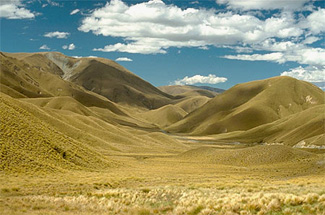
If global temperatures rise 2-4°C many areas could become desert or savannah. Image Lindis Pass, South Island permission of Virtual New ZealandGlobal warming: the final warningMark Lynas, 3 February 2007According to yesterday's UN report, the world will be a much hotter place by 2100. This will be the impact ... +2.4°C Coral reefs almost extinctIn North America, a dust-bowl brings deserts to life in the high plains states, centred on Nebraska, but also wipes out agriculture and cattle ranching as sand dunes appear across five US states, from Texas in the south to Montana in the north. Rising sea levels accelerate as the Greenland ice sheet tips into irreversible melt, submerging atoll nations and low-lying deltas. In Peru, disappearing Andean glaciers mean 10 million people face water shortages. Warming seas wipe out the Great Barrier Reef and make coral reefs virtually extinct throughout the tropics. Worldwide, a third of all species on the planet face extinction. |
||||||||
|
||||||||
The North Pole becomes ice-free for the first time in 3 million years. Polar bears, walruses and ringed seals all go extinct. Water supplies run short in California as the Sierra Nevada snowpack melts away. Tens of millions are displaced as the Kalahari desert expands across southern Africa. +4.4°C Melting ice caps displace millionsRapidly rising temperatures in the Arctic put Siberian permafrost in the melt zone, releasing vast quantities of methane and CO2. Global temperatures keep on rising rapidly in consequence. Melting ice-caps and sea level rises displace more than 100 million people, particularly in Bangladesh, the Nile Delta and Shanghai. Heatwaves and drought make much of the sub-tropics uninhabitable: large-scale migration even takes place within Europe, where deserts are growing in southern Spain, Italy and Greece. More than half of wild species are wiped out, in the worst mass extinction since the end of the dinosaurs. Agriculture collapses in Australia. |
||||||||
|
||||||||
In east India and Bangladesh, monsoon floods threaten millions. Super-El Niņos spark global weather chaos. Most of humanity begins to seek refuge away from higher temperatures closer to the poles. Tens of millions of refugees force their way into the British Isles and Scandanavia. World food supplies run out. +6.4°C Most of life is exterminatedWarming seas lead to the possible release of methane hydrates trapped in sub-oceanic sediments: methane fireballs tear across the sky, causing further warming. The oceans lose oxygen and turn stagnant, releasing poisonous hydrogen sulphide gas and destroying the ozone layer. Deserts extend almost to the Arctic. "Hypercanes" (hurricanes of unimaginable ferocity) circum-navigate the globe, causing flash floods which strip the land of soil. Humanity reduced to a few survivors eking out a living in polar refuges. Most of life on Earth has been snuffed out, as temperatures rise higher than for hundreds of millions of years. Below: Death Valley, California Image courtesy of the Image Science & Analysis Laboratory, NASA.
|
||||||||
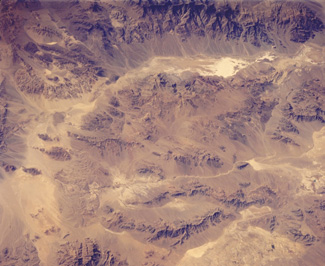 |
||||||||
 Carbon dioxide rate is at highest level for 650,000 years
Carbon dioxide rate is at highest level for 650,000 years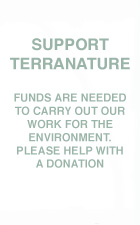
 View larger image
View larger image